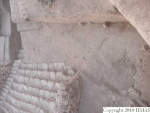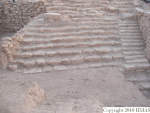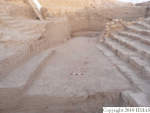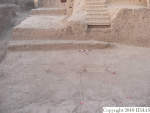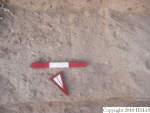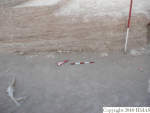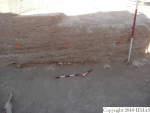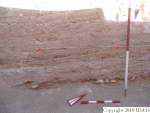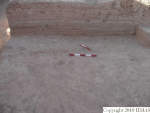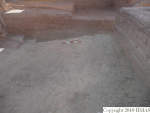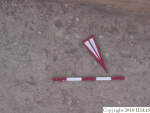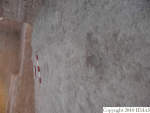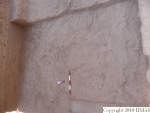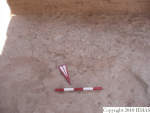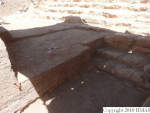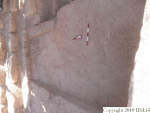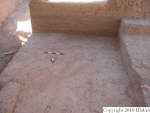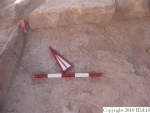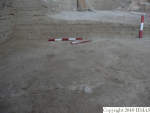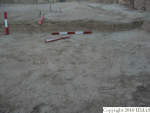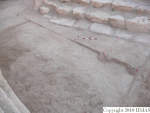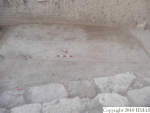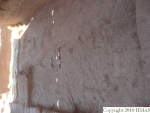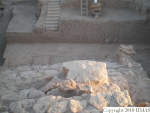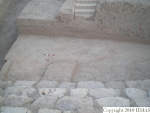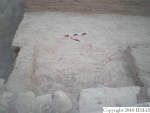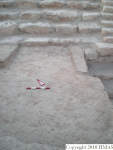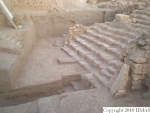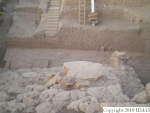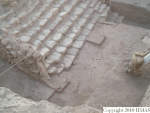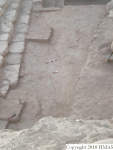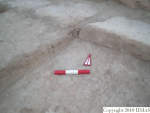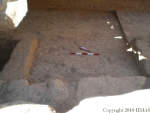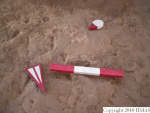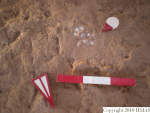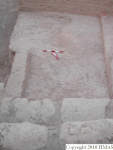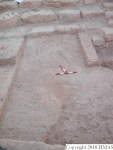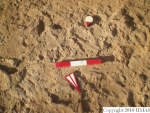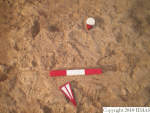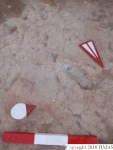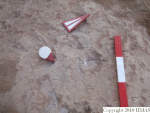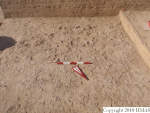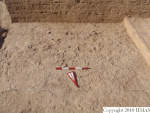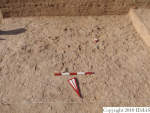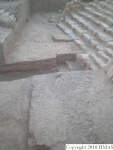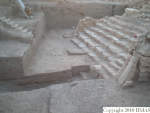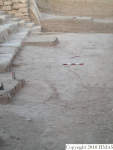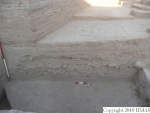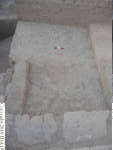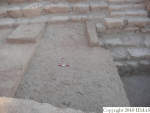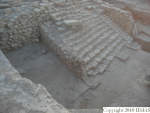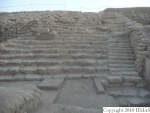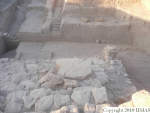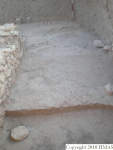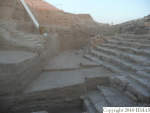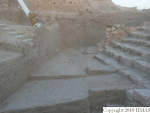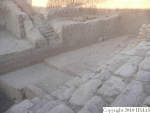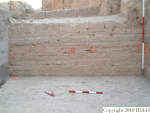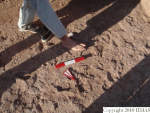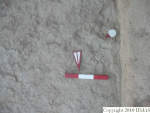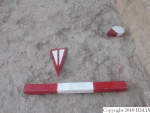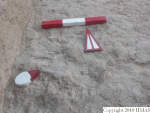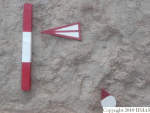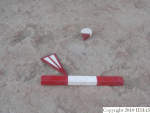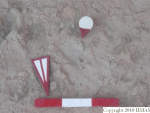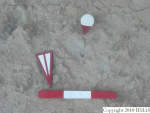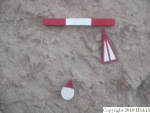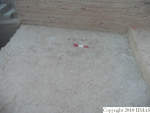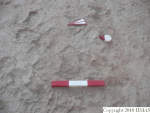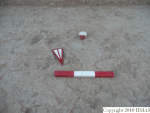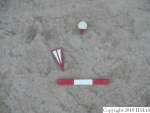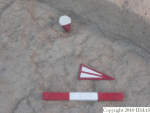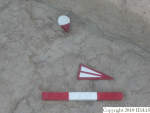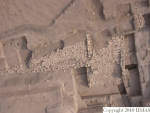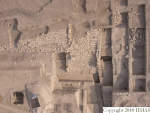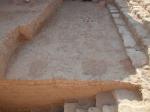1. OVERVIEW
| Roster | Date | Author | Record |
|---|---|---|---|
| Best image | 2014-10-24 | cJC |  [Input: YX24CJC.j] [Input: YX24CJC.j] |
2. IDENTIFICATION
Designation
| Roster | Date | Author | Record |
|---|---|---|---|
| Description (summary) | 2009-07-27 | cJC | This locus is assigned to the area between k100 and the east baulks of k4 and k5. It is smaller than a traditional 5x5m square due to the cut of k100 to the east. [Input: T727CJC.j] |
| 2009-08-01 | cJC | k110 is an irregular locus. It is bounded by the cut of k100 to the east and by squares k4 and k5 to the east. It is defined in the south by relays r1077 (in the south-west corner of the locus) and r1078 in the south-east corner of the locus. In the north it is defined by m6154 in the north-west. [Input: T801CJC.j] | |
| 2009-08-22 | cJC | This locus is irregular in shape. In the south it is defined by r1078 and r1077, in the north it is bounded by the apron(f131) and r1142 and m6154 in the north. [Input: T822CJC.j] |
3. STRATIGRAPHY
Recovery/Assignment
| Roster | Date | Author | Record |
|---|---|---|---|
| Daily notes about recovery of elements | 2009-08-01 | cJC | We are going to begin excavating the whole of locus k110 today. Our goal is to expose the salmon colored layer that is available in the west section of k100. We removed the remaining portion of f355 and then began removing f357. We did not reach the salmon layer but we should tomorrow. [Input: T801CJC.j] |
| 2009-08-13 | cJC | Today we began removing f359 in k110. Now that we have exposed f359 in k110, k5 and k15 we are going to make a sounding in all of k110. We began by removing f359 in k110. mKB and hQ came during our daily meeting with gB and fAB and said that although we did not have enough sherds to be conclusive the sherds we collected from f359 are provisionally from the EDIII period. This confirms our suspicions that f359 is not the floor associated with the construction of the apron (f131). We excavated the layers by first examining the west section of k100 and using the layers there as a starting point for exploring the features across k110 from east to west. Under f359 in section was a gray layer which we named f377. It appeared to be thick in section but as it moved southwest across the locus it became apparent that there was a difference, with f377 becoming thinner in the south portion of the locus overlaying a very thick red layer with ash in it which we called f379. Some of f379 was removed before we understood the differences in the layers from north to south and under f379 we exposed a mud surface f381 which had the paw print of a dog in it. We photographed the pawprint normally and then experimented with filling it with powder to make it show up better in pictures. [Input: T815CJC.j] | |
| 2009-08-19 | cJC | The southern portion of k110, covering the human footprints, was backfilled first with clean dirt, then a cloth covering, then plastic capped with more dirt. Next year it should be possible to still see the human footprints. [Input: T819CJC2.j] | |
| Strategy (projected or implemented) | 2009-08-01 | cJC | If we followed the site-wide grid the baulk would run right through the middle so instead we will excavate without a north baulk, relying on the south section for drawing. This should not be a problem due to the small size of the locus. A north baulk would also inhibit our understanding of how the layers relate to the apron. We have decided it is better to excavate the area as delimited by the boundaries specified here. [Input: T801CJC.j] |
Volumetric Localization
| Roster | Date | Author | Record |
|---|---|---|---|
| Elements within locus | 2009-07-26 | cJC | f347 (floor, type b) f350 (floor, type b) f353 (floorsurface in general) [Input: T822CJC2.j] |
| 2009-07-30 | cJC | f355 (pavement, type c) [Input: T822CJC2.j] | |
| 2009-08-01 | cJC | f357 (floor, type d) f358 (lens) f359 (floorsurface in general) [Input: T822CJC2.j] |
|
| 2009-08-12 | cJC | f377 (lens) f378 (floorsurface in general) f379 (floor, type b) f381 (mud) [Input: T822CJC2.j] |
|
| 2011-11-16 | cJC | f392 (floor) [Input: V930CJC.j] | |
| 2009-07-28 | cJC | q848 (bones, pottery) q849 (bones, pottery) [Input: T729CJC3.j] |
|
| 2009-07-26 | sH | q852 (bones, pottery) [Input: T729CJC3.j] | |
| 2009-07-30 | cJC | q853 (bones, pottery) q856 (bones, pottery) [Input: T804CJC.j] |
|
| 2009-08-01 | cJC | q857 (pottery) q858 (bones, pottery) q859 (bones, pottery) [Input: T804CJC.j] |
|
| 2014-01-17 | cJC | q860 (bones, pottery) q861 (pottery) [Input: Y117CJC.j] |
|
| 2009-08-13 | cJC | q889 (bones, pottery) q890 (pottery) [Input: T826CJC2.j] |
|
| 2009-08-15 | sH | q891 (pottery) [Input: T826CJC2.j] | |
| Relays (applicable to elements) | 2009-07-30 | cJC | r1077 (38757 50755 - 8726 / Relay location: SW corner of k110) [Input: T820CJCR.j] |
| 2009-07-30 | cJC | r1078 (38659 51030 - 8726 / Relay location: SE corner of k110) [Input: T820CJCR.j] | |
| 2009-08-22 | cJC | r1142 (39044 51072 - 8745 / Relay location: NE corner) [Input: T823CJCR.j] |
Deposition
| Roster | Date | Author | Record |
|---|---|---|---|
| Notes on deposition | 2009-08-13 | cJC | The accumulations (beginning with f359 but including f377 and f379) are thicker in the southern portion of k110 than in the northern portion closer to the apron. This may be due to water flowing away from the apron (f131) or due to heavy use of the area immediately in front of the apron (f131). [Input: T815CJC.j] |

